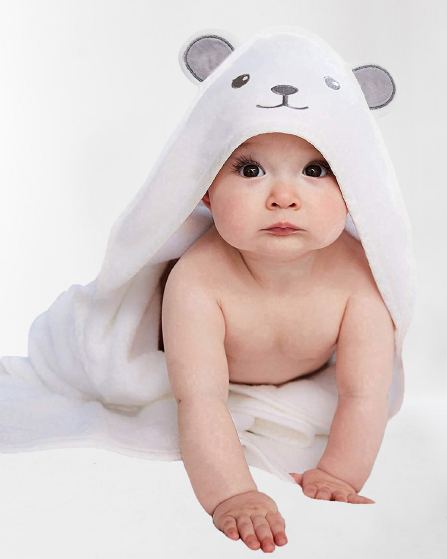BENEFITS OF DIGITAL THERMOMETERS, TYPES OF THERMOMETERS & HOW TO USE THEM
A digital thermometer is a device that is used to measure the
body's temperature. When your baby shows signs of a fever, the first thing
you'll do is check his or her temperature with a thermometer.
Taking a baby's temperature, on the other hand, can be perplexing
for first-time parents. Understanding the various types of thermometers will
assist you in making the best decision.
Types of
Thermometer
Digital armpit
thermometer:
Checking the temperature of children under the age of 5 is
simple with a digital armpit thermometer. To get an accurate temperature,
you'll need to place this thermometer in your child's armpit for about a
minute. The majority of these digital thermometers come with user instructions,
making them simple to use.
Digital Ear (tympanic)
thermometer:
Place a digital ear (tympanic) thermometer in your baby's ear to
determine his or her temperature. This digital baby thermometer reads the
temperature in a fraction of a second, but it is very expensive. In order to
get an accurate reading, an ear thermometer must be placed in the correct
position in the ear.
Digital Forehead
thermometer:
The temporal artery of the forehead is scanned by the forehead
thermometer to obtain a reading. To determine the baby's temperature, the
thermometer will read the infrared heat that comes from the head. The most
practical thermometer is a forehead thermometer.
Glass and mercury
thermometer:
This type of thermometer is made of tubular glass with mercury
inside. It works by placing a thermometer beneath the baby's tongue and taking
his or her temperature. Even if the thermometer accurately records the
temperature, there is always the risk of mercury exposure. As a result, this
type of thermometer is no longer widely used.
Strip Thermometers:
A strip thermometer takes the temperature of a sick person's
body by placing a strip on his or her forehead for a few minutes. However,
because it does not provide an accurate reading, it is no longer used or
recommended.
You probably know what type of thermometer will work best for
you and your family now that you've learned about the different types of
thermometers. So go ahead and choose one that best suits your requirements.
Benefits of Digital
Thermometers
§ Temperatures can be read quickly and accurately with digital thermometers.
§ They're small and portable, and you can even keep the
thermometer in your bag.
§ It's simple to read the display.
§ A digital thermometer is not prohibitively expensive.
§ They do not actually require any special care.
Tips
for Maintaining Your Baby's Temperature
When a baby has an infection such as
an ear infection, sore throat, cold, or urinary tract infection, he or she will
usually develop a fever. If you notice the baby's body temperature is higher
than normal, check to see if it is within the acceptable range. To check the
temperature, use a baby-friendly thermometer like the Digital Dummy
Thermometer.
If the temperature is high or does not
go down after two days, you should take the baby to a pediatrician for a
thorough examination. The doctor will prescribe the necessary medications if
necessary.
Fever in babies can also be triggered
by changes in the weather.
Tips for how to use a thermometer
We may all be a little skeptical, but always read the instructions! The type
of thermometer you have in your medicine cabinet will determine how you use it.
Here are some general recommendations for each type.
Use
of Tympanic (in the ear) thermometers
Make sure your thermometer is clean
and, if necessary, cover the end with a cover.
Pull your child's ear back gently and
place the cone-shaped end of the earphone in the ear canal. Position it so that
it looks like you're pointing it at the eye on the opposite side of his head.
Turn on the thermometer once it's in
place and wait for it to beep, indicating that it's taken a reading.
Use
of Temporal artery (forehead) thermometers
Make sure the sensor on your
thermometer is clean and dry.
Directly in the center of your baby's
forehead, place the probe. As you move the thermometer toward one ear, press
the scan button.
Turn off the scanner and take your
baby's temperature.
Use
of Axillary (underarm) thermometers
Ensure that your thermometer is clean
and dry before using it. While this isn't as important as when you put it in
your rectum or mouth, it is necessary for the device's maintenance.
Place the reading end of the
thermometer in the space between your baby's armpits and turn it on. Make sure
the end touches your child's skin rather than his or her clothing.
Hold it in place until you hear a beep
indicating that a reading has been taken.
Use
of Oral thermometers
Use soap and water or rubbing alcohol
to clean your thermometer. Allow drying after rinsing. Turn the thermometer on
and place it under the tongue in the back of your child's mouth. When you hear
a beep indicating that you've taken a reading, you can remove it.
BEST BABY THERMOMETERS
Best
forehead thermometer
ExergenTemporal Artery Thermometer
Features: The Exergen temporal
thermometer only requires a gentle stroke across the forehead to obtain a reading.
It has an illuminated display and indicator beeps that can be turned on and
off.
According to the company, this product
has been used in over 70 clinical studies and has "proven" accuracy.
If you're concerned about small cell batteries (and the small objects ending up
in children's mouths), you'll be relieved to learn that this thermometer uses a
9-volt battery. It's made in the United States as well.
Best
ear/forehead combo thermometer
iProvenEar and Forehead Thermometer
Features: The iProven infrared thermometer has two recording options: ear
and forehead, and provides readings in less than a second. A fever alarm,
backlit display, and temperature color guide are also included. It even has the
capability of storing up to 20 readings in its memory. A 100-day money-back
guarantee is included with this product.
Best
rectal/oral/axillary combo thermometer
Features: The Enji thermometer is
great for the baby and the whole family, with a quick 10-second reading time
and accurate rectal, oral, and armpit reads. A flexible tip, large numbers, and
Fahrenheit and Celsius modes are also included in this budget-friendly option.
It's also waterproof, which makes cleaning a breeze. This product also comes with a full money-back guarantee from the company.
Best
thermometer for newborns
Features: For the youngest infants,
it's best to take their temperature rectally. New parents — or anyone, for that
matter — may be apprehensive about inserting a probe too deeply. The Vicks
rectal thermometer is ergonomically designed, with a short, flexible probe and
a wide base that prevents you from going too far.
It also has a memory function, which
recalls your previous reading and illuminates (backlit) when the reading is
finished. Oh, and its waterproof design makes cleaning a breeze.
Best
budget thermometer
Features: A best-selling flexible-tip
thermometer that reads both oral and rectal temperature in just 10 seconds
costs about one Alexander Hamilton (he's on the $10 bill). (For rectal
readings, always use a separate probe cover.)
Cleaning with soap and water is simple
thanks to the waterproof design. Along with the temperature reading, the
display includes a smiling guide to help determine whether the fever is normal
(smile), elevated (neutral), or high (frown). The company also offers a 100-day
guarantee on this device.
In your baby's first few years, there's a lot to learn. Don't worry; you'll figure it out (along with a lot of other things) and be a pro in no time.
Taking your baby's temperature may
take a few tries to get the hang of. If you need some advice, talk to your
child's pediatrician or nurse at your next well-baby appointment. Your doctor
may even have specific thermometer suggestions for you to consider.









Comments
Post a Comment